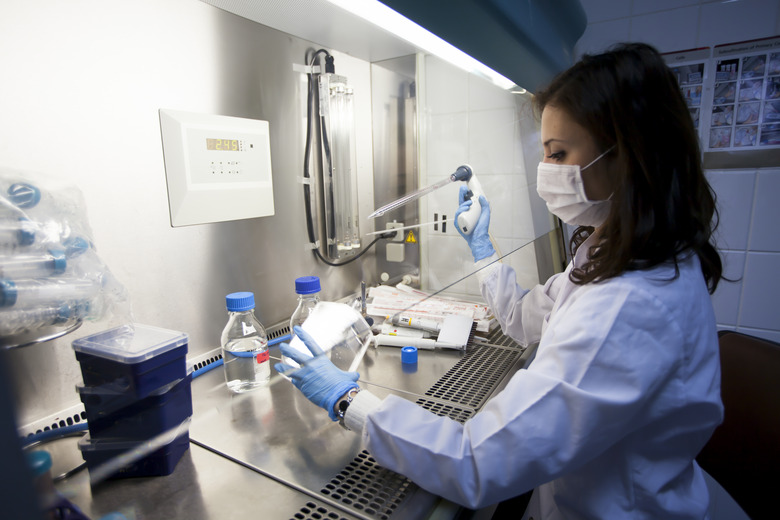How To Calculate Entropy Change
Entropy is one way to measure energy and is given in joules per Kelvin. If the change in entropy is positive, energy has entered the system. If the change in entropy is negative, energy has been given off. By calculating the change in entropy, you can determine how much energy a given reaction will create or require.
Calculating the Change in Entropy
Step 1
Determine the standard entropies of all products and reactants using the entropy table. Given the equation 2H2O + CO2 ? CH4 + 2O2, the entropies would be 188.7 for H2O, 213.6 for CO2, 186 for CH4, and 205 for O2.
Step 2
Total the entropies of all of the products. The products are the compounds produced as a result of the chemical reaction. For example, in the equation above, the products are CH4 and 2 O2. The total entropy is 186 plus two times 205, which is 596 joules per Kelvin.
Step 3
Total the entropies of all of the reactants. For example, in the equation above, the reactants are 2 H2O and CO2. The total entropy is two times 188.7 plus 213.6 which is 591 joules per Kelvin.
Step 4
Subtract the entropies of the reactants from the entropies of the products. For example, 596 minus 591 is 5 joules per Kelvin, meaning energy entered the system during the reaction.
Things Needed
- Calculator
- Entropy Table
TL;DR (Too Long; Didn't Read)
Make sure to multiply the standard entropy by the number of molecules involved in the reaction. For example, if the equation includes 2 H2O, make sure to double the standard entropy for H2O.
Cite This Article
MLA
Kennan, Mark. "How To Calculate Entropy Change" sciencing.com, https://www.sciencing.com/calculate-entropy-change-2655/. 31 May 2013.
APA
Kennan, Mark. (2013, May 31). How To Calculate Entropy Change. sciencing.com. Retrieved from https://www.sciencing.com/calculate-entropy-change-2655/
Chicago
Kennan, Mark. How To Calculate Entropy Change last modified March 24, 2022. https://www.sciencing.com/calculate-entropy-change-2655/
